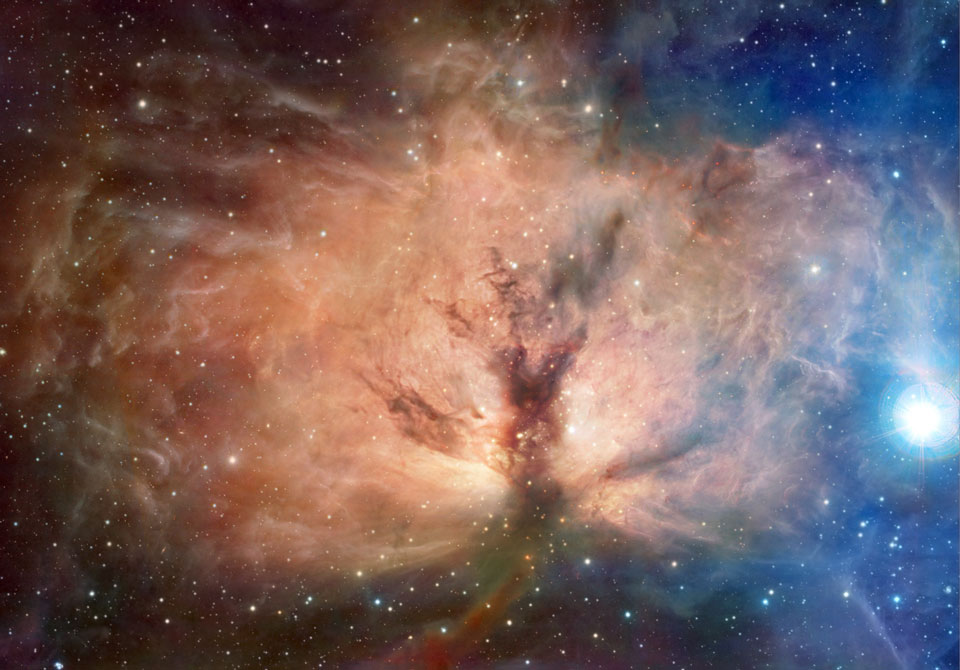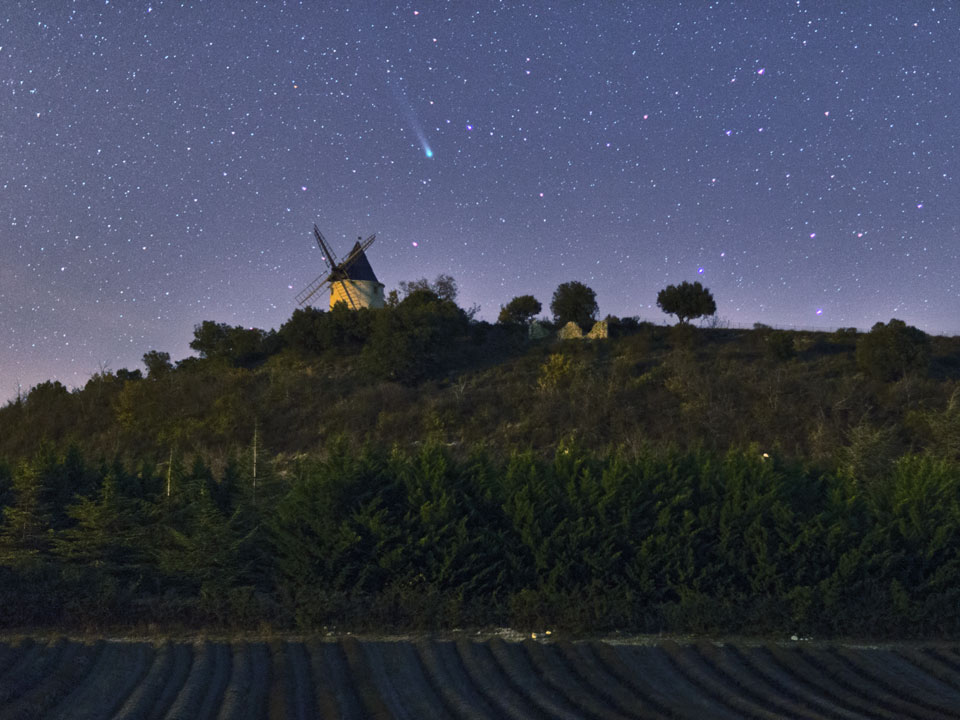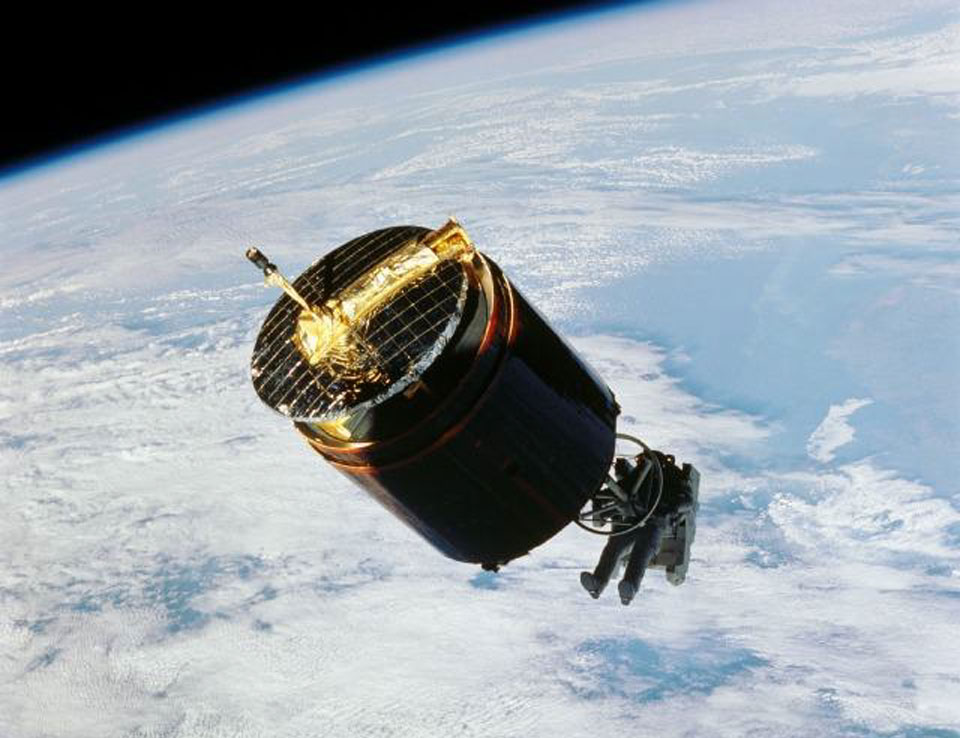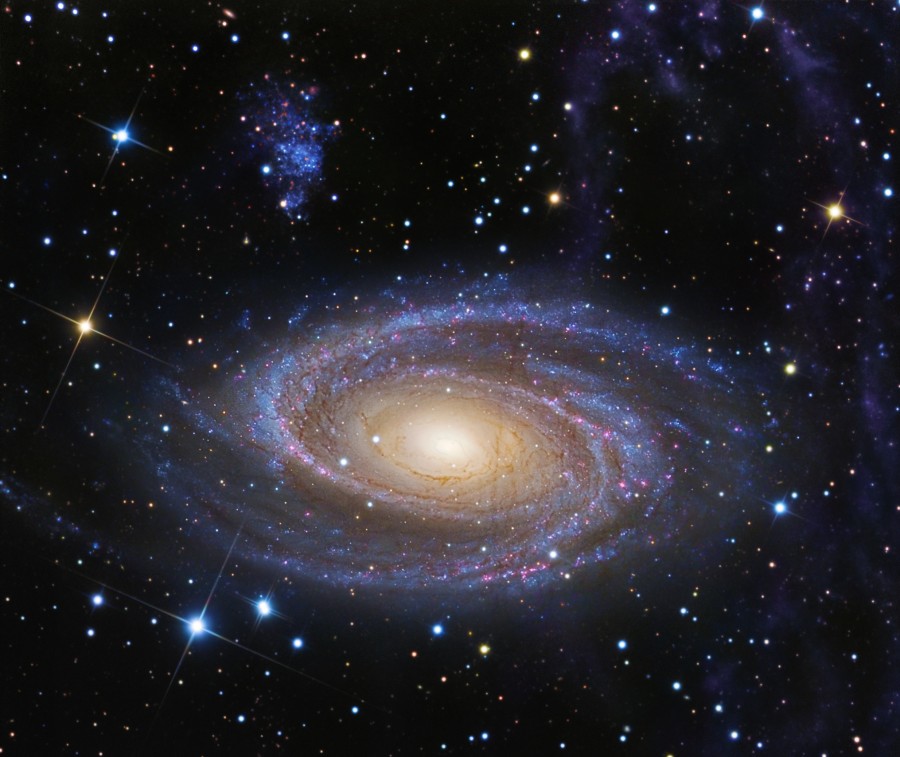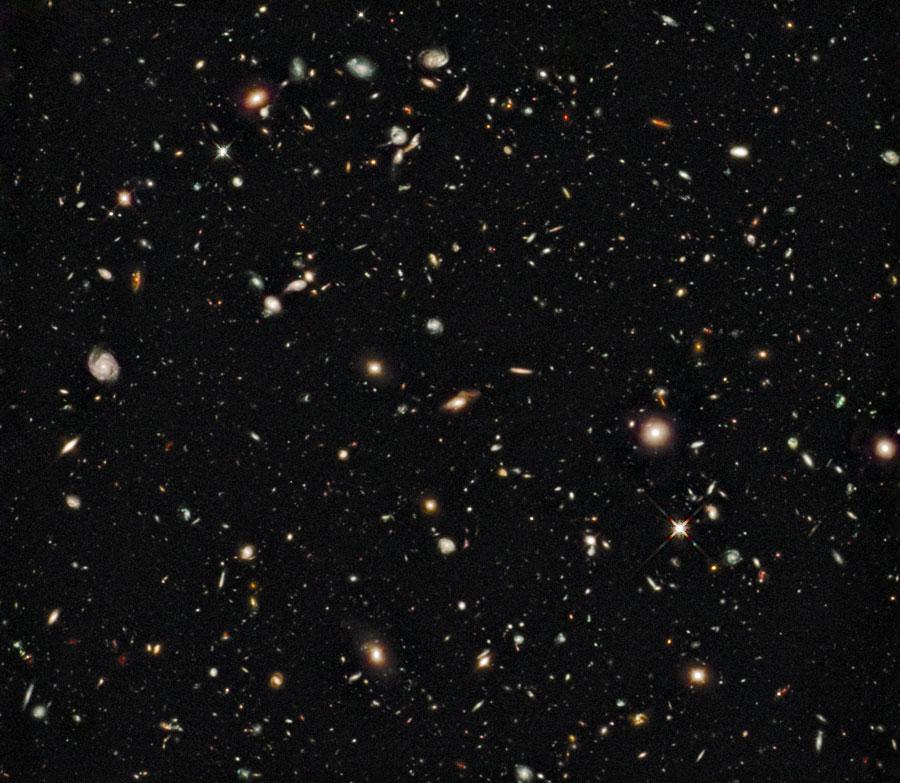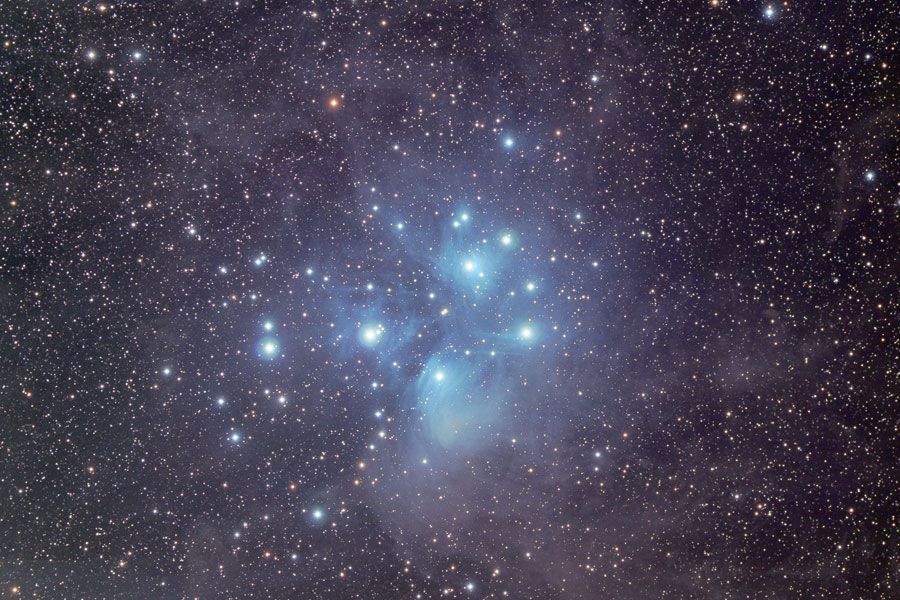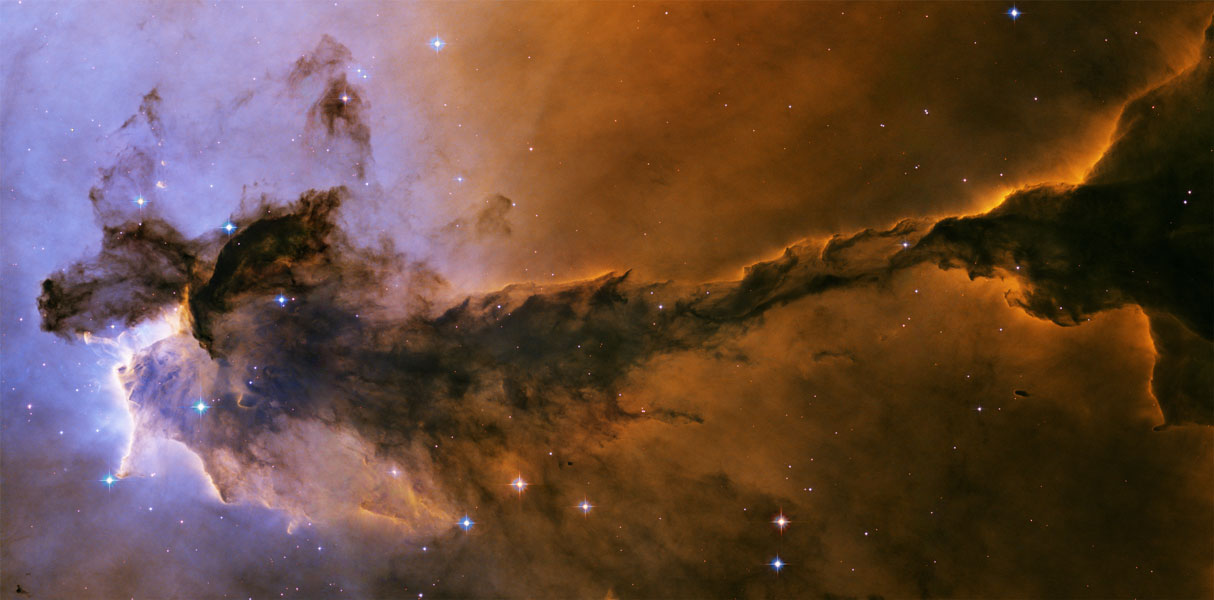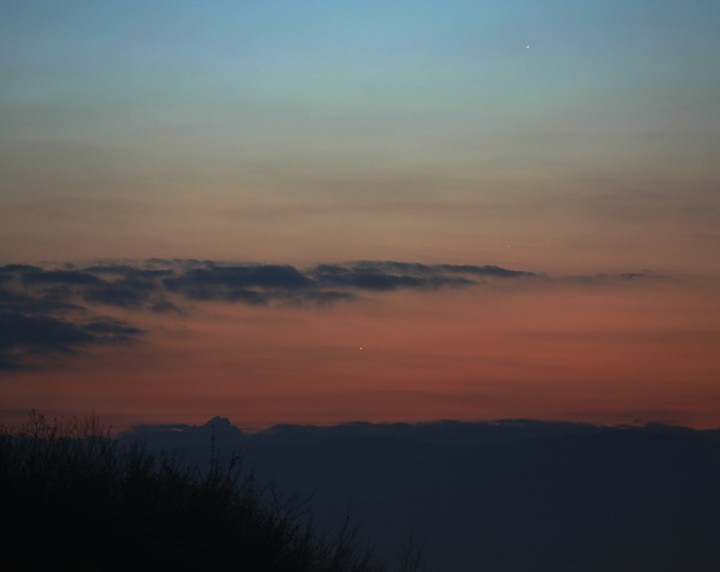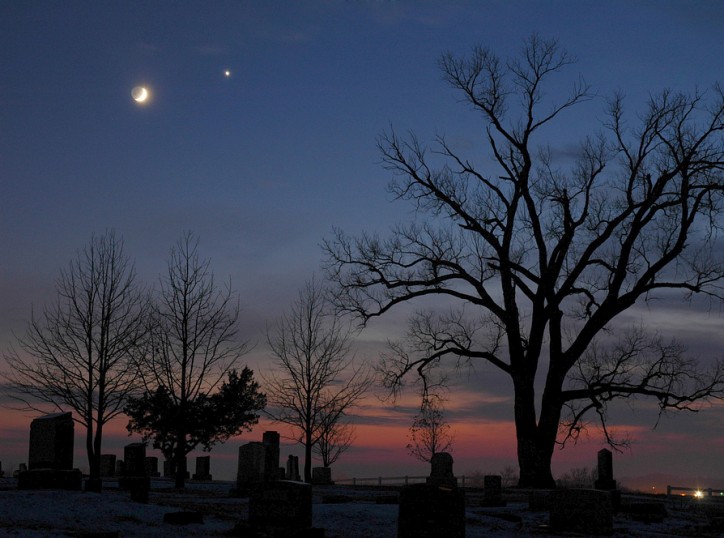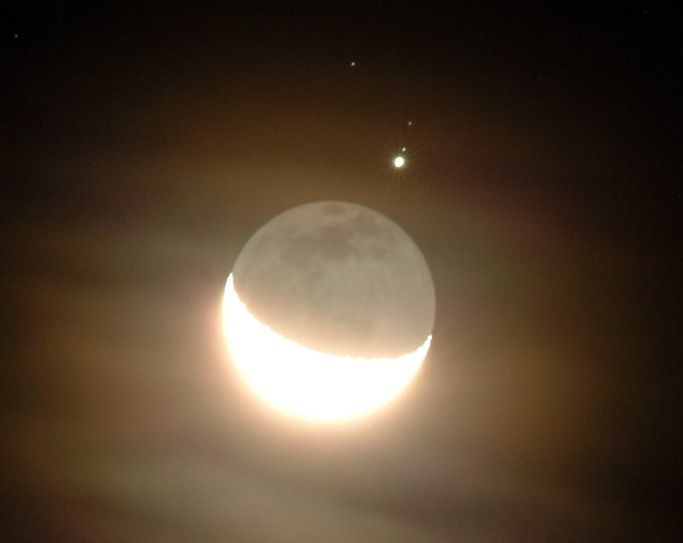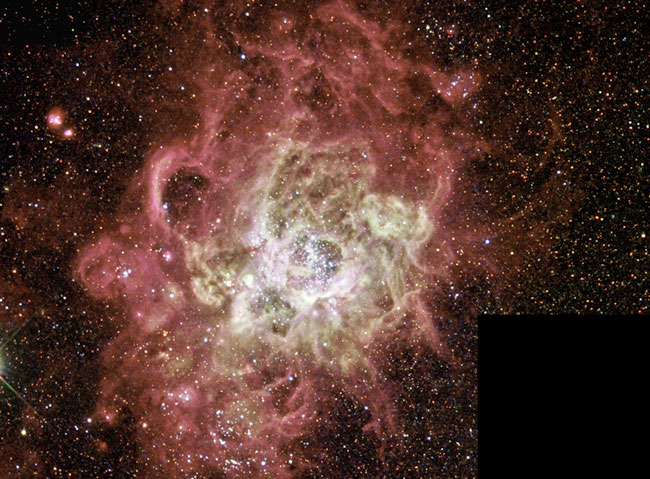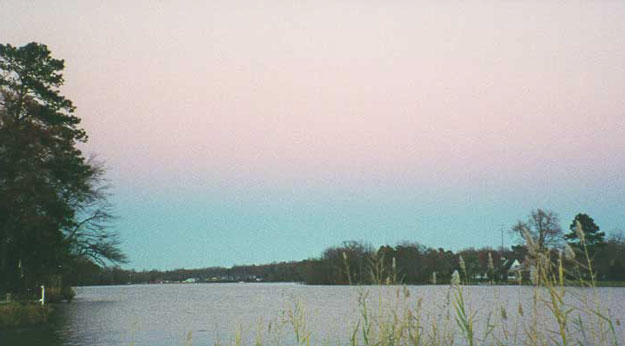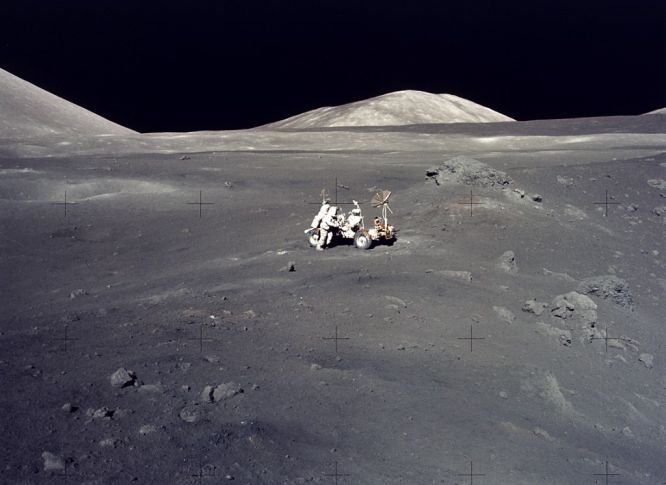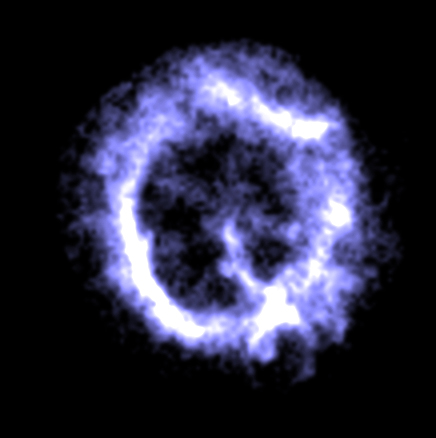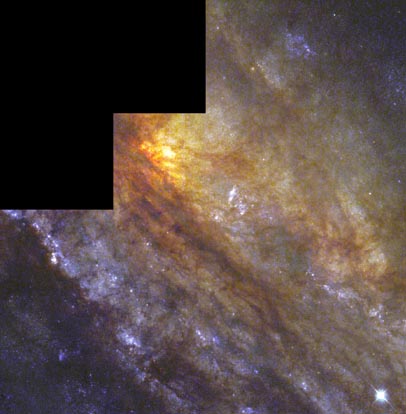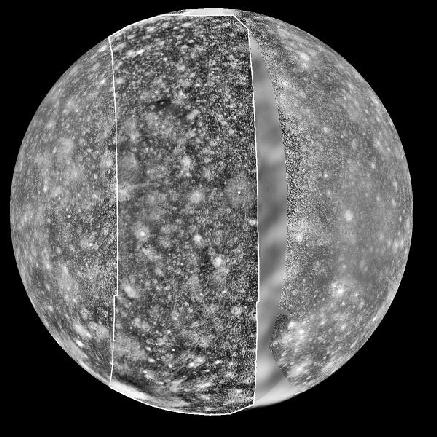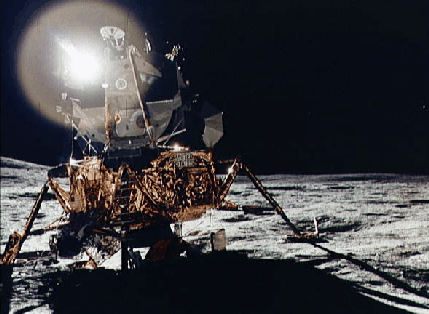| << Previous | Index | Next >> |
2014
2013 Lovejoy continues to be an impressive camera comet. Pictured above, Comet C/2013 R1 (Lovejoy) was imaged above the windmill in Saint-Michel-l'Observatoire in southern France with a six-second exposure. In the foreground is a field of lavender. Comet Lovejoy should remain available for photo opportunities for northern observers during much of December and during much of the night, although it will be fading as the month progresses and highest in the sky before sunrise. In person, the comet will be best viewed with binoculars. A giant dirty snowball, Comet Lovejoy last visited the inner Solar System about 7,000 years ago, around the time that humans developed the wheel.
2012 In 1984, high above the Earth's surface, an astronaut captured a satellite. It was the second satellite captured that mission. Pictured above, astronaut Dale A. Gardner flies free using the Manned Maneuvering Unit and begins to attach a control device dubbed the Stinger to the rotating Westar 6 satellite. Communications satellite Westar 6 had suffered a rocket malfunction that left it unable to reach its intended high geosynchronous orbit. Both the previously caught Palapa B-2 satellite and the Westar 6 satellite were guided into the cargo bay of the Space Shuttle Discovery and returned to Earth. Westar 6 was subsequently refurbished and sold.
2011 Tomorrow, December 10, the Full Moon will slide through planet Earth's shadow in a total lunar eclipse. The entire eclipse sequence, including 51 minutes of totality, will be visible from Asia and Australia, but moonwatchers in Europe and Africa will miss out on the beginning partial phases because for them, the eclipse will start before moonrise. In central and western North America the earlier phases of the eclipse will be in progress as the Moon sets. In fact, while those in the east will miss out, North Americans far enough west could see a scene very much like this one, with a mostly eclipsed Moon low and near the western horizon during morning twilght. This morning twilight view of another lunar eclipse approaching its total phase at moonset was captured in 2008 on February 21, from the Zagros Mountains of Iran.
2010
2009
2008 Perhaps the most famous star cluster on the sky, the Pleiades can be seen without binoculars from even the depths of a light-polluted city. Also known as the Seven Sisters and M45, the Pleiades is one of the brightest and closest open clusters. The Pleiades contains over 3,000 stars, is about 400 light years away, and only 13 light years across. A prominent telescope and car company has borrowed the star cluster's name. Quite evident in the above photograph are the blue reflection nebulae that surround the brighter cluster stars. Low mass, faint, brown dwarfs have also been found in the Pleiades.
2007 The dust sculptures of the Eagle Nebula are evaporating. As powerful starlight whittles away these cool cosmic mountains, the statuesque pillars that remain might be imagined as mythical beasts. Pictured above is one of several striking dust pillars of the Eagle Nebula that might be described as a gigantic alien fairy. This fairy, however, is ten light years tall and spews radiation much hotter than common fire. The greater Eagle Nebula, M16, is actually a giant evaporating shell of gas and dust inside of which is a growing cavity filled with a spectacular stellar nursery currently forming an open cluster of stars. The above image in scientifically re-assigned colors was released as part of the fifteenth anniversary celebration of the launch of the Hubble Space Telescope.
2006 Three children of the Sun rise in the east in this peaceful dawn skyview recorded December 7th near Bolu, Turkey. Inner planet Mercury, fresh from its second transit of the 21st century, stands highest in the bright sky at the top right. Gas giant Jupiter lies below the cloud bank near picture center. A newsworthy Mars is also visible, right of Jupiter and just above the dark cloud bank. On Sunday, these planets will form a much tighter grouping before sunrise, while in the coming days the western sky after sunset will be ruled by brilliant planet Venus, also known as the evening star.
2005 If you've been outdoors near sunset, then you've probably noticed Venus low in the west as the brilliant evening star. Sometimes mistaken for a tower light near the horizon, Venus is the third brightest celestial beacon, after the Sun and Moon, in planet Earth's sky. That distinction is particularly easy to appreciate in this peaceful scene featuring the crescent Moon, Venus, and sunset colors captured on December 4th near Albany, Missouri, USA. As this season's evening star, Venus will be at its most brilliant tonight, but as December progresses the bright planet will begin to fall out of the western sky. By early next week, December's Moon will have moved on to meet another bright planet overhead -- Mars.
2004 Early Tuesday morning, December 7th, June Croft thought the southeastern sky above Atmore, Alabama, USA was beautiful. Watching the Moon rise through gossamer clouds, she noted, " ... the crescent Moon looked like it was held in the sky by a star just off its shadowed horizon." What was that star? Bright Jupiter of course, and some watched as the Moon actually occulted or passed in front of the Solar System's reigning gas giant planet. For astronomer Jimmy Westlake in Colorado, Jupiter was already hidden at moonrise that morning, but later he was able to record this lovely image, not unlike the view that inspired Croft. Seen through gossamer clouds, Jupiter along with large Jovian satellites Ganymede and Callisto (bottom to top) has emerged from behind the crescent Moon's shadowed horizon.
2003 Stars are sometimes born in the midst of chaos. About 3 million years ago in the nearby galaxy M33, a large cloud of gas spawned dense internal knots which gravitationally collapsed to form stars. NGC 604 was so large, however, it could form enough stars to make a globular cluster. Many young stars from this cloud are visible in the above image from the Hubble Space Telescope, along with what is left of the initial gas cloud. Some stars were so massive they have already evolved and exploded in a supernova. The brightest stars that are left emit light so energetic that they create one of the largest cloud of ionized hydrogen gas known, comparable to the Tarantula Nebula in our Milky Way's close neighbor, the Large Magellanic Cloud.
2002 When the Moon's shadow reached out and touched the Earth last week, the result was a solar eclipse. Such an eclipse is total only for observers located along a narrow path corresponding to the ground track of the shadow's dark central portion or umbra. For this eclipse, racing along at nearly 2000 kilometers per hour, the Moon's umbra obligingly crossed over land along regions of Africa and Australia. Totality lasted for about two minutes or less at a given location. Many nearby regions fell within the lighter but much wider outer shadow region, the penumbra, and witnessed a partial solar eclipse. The above movie follows the Moon's shadow as it crossed Africa during a similar eclipse in June 2001. Each frame is separated in time by about 20 minutes. The movie was created from frames taken by the orbiting European satellite MeteoSat-6.
2001 Although you've surely seen it, you might not have noticed it. During a cloudless twilight, just before sunrise or after sunset, part of the atmosphere above the horizon appears slightly off-color, slightly pink. Visible in the above photograph, this off-color band between the dark eclipsed sky and the blue sky can best be seen in the direction opposite the Sun and is called the Belt of Venus. Straight above, blue sky is normal sunlight reflecting off the atmosphere. In the Belt of Venus, however, the atmosphere reflects light from the setting (or rising) Sun which appears more red. The Belt of Venus can be seen from any location with a clear horizon. It is frequently caught by accident in other photographs.
2000 Buzz Aldrin, Apollo 11 Lunar Module pilot and the second human to walk on the Moon, described the lunar landscape as "a magnificent desolation". Dramatic pictures from the Apollo missions to the lunar surface testify to this apt turn of phrase. Near the Apollo 17 landing site, Family Mountain (center background) and the edge of South Massif (left) frame the lunarscape in this photo of astronaut Harrison Schmitt working alongside the lunar roving vehicle. Schmitt and fellow astronaut Eugene Cernan were the last to walk on this magnificent desolation.
1999 The Q-shaped cloud seen in this false-color X-ray image from the orbiting Chandra Observatory is big ... about 40 light-years across. It's hot too, as its X-ray glow is produced by multi-million degree gas. Cataloged as E0102-72, this cosmic Q is likely a several thousand year old supernova remnant, the result of the death explosion of a massive star. A supernova can dramatically affect its galactic environment, triggering star formation and enriching the local interstellar medium with newly synthesized elements. This supernova remnant is located about 210,000 light-years away in our neighboring galaxy, the Small Magellanic Cloud (SMC), so the detailed Chandra X-ray image is impressive - particularly as it reveals what appear to be strange spoke-like structures radiating from the remnant's center.
1998 NGC 253 is not only one of the brightest spiral galaxies visible, it is also one of the dustiest. Discovered in 1783 by Caroline Herschel in the constellation of Sculptor, NGC 253 lies only about ten million light-years distant. NGC 253 is the largest member of the Sculptor Group of Galaxies, the nearest group to our own Local Group of Galaxies. The dense dark dust accompanies a high star formation rate, giving NGC 253 the designation of starburst galaxy. Visible in the above photograph from the Hubble Space Telescope is the active central nucleus, also known to be a bright source of X-rays and gamma rays.
1997 Where is the rest of the circle? Jupiter's largest moon Ganymede has some truly unusual terrain, including the pictured half circle above cut by nearly parallel curves. Full circles can be easily explained by impact craters, but partial circles imply that some resurfacing has occurred since the original impact. The diameter of the half circle is about 32 kilometers. Also of interest is a dense linear crater chain that cuts across the top of the half-circle. Mysteries like these are typically solved by the hard work of reconstructing a sequence of natural occurrences, which in this case may yield a better understanding of Ganymede's interesting past.
1996 Callisto's surface shows its age. While probably formed at the same time as Io, the difference between the surfaces of these two moons of Jupiter could hardly be greater. Io's surface is young, shows practically no impact craters, and is continually being repaved by the lava exploding from its many large volcanoes. Callisto's surface is old, shows the highest density of impact craters in the Solar System, and harbors no volcanoes or even any large mountains. Callisto's surface is one large ice-field, laced with cracks and craters from billions of years of collisions with interplanetary debris. The high-resolution vertical band in the above mosaic was taken by the robot spacecraft Galileo currently orbiting Jupiter. The rest of the mosaic was compiled from pictures taken by the Voyager spacecraft which passed the Callisto in 1979.
1995 The jewel-like glare from a brilliant sun reflects off the lunar module of the Apollo 14 mission to the Moon as it rests on the lunar surface in February 1971. Astronauts Alan Shepard and Edgar Mitchell walked on the Moon's surface while astronaut Stuart Roosa piloted the orbiting command module. Coming only months after the abortive Apollo 13 mission, Apollo 14 was famous for long exploratory moon walks, collecting samples of lunar bedrock from Cone Crater, deploying the Apollo Lunar Surface Experiments Package, and hitting golf balls. The slope rising to the rim of Cone Crater is visible at the left edge of the photo.
| << Previous | Index | Next >> |
